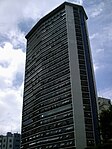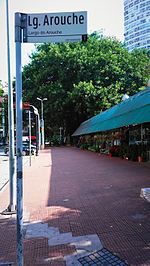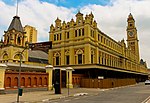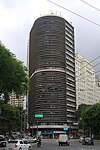Monument to the Duke of Caxias
Bronze sculpturesBuildings and structures in São PauloCentral Zone of São PauloMonuments and memorials in BrazilMonuments and memorials in São Paulo ... and 1 more
Sculptures in Brazil

The Monument to the Duke of Caxias (Portuguese: Monumento a Duque de Caxias) is a platinum bronze statue on a granite pedestal depicting the battles of the Duke of Caxias. Located in the city of São Paulo, the monument is 48 meters high and is the second largest equestrian memorial in the world.
Excerpt from the Wikipedia article Monument to the Duke of Caxias (License: CC BY-SA 3.0, Authors, Images).Monument to the Duke of Caxias
Praça Princesa Isabel, São Paulo
Geographical coordinates (GPS) Address External links Nearby Places Show on map
Geographical coordinates (GPS)
| Latitude | Longitude |
|---|---|
| N -23.536388888889 ° | E -46.643333333333 ° |
Address
Monumento a Duque de Caxias
Praça Princesa Isabel
01206-010 São Paulo, Campos Elísios (Santa Cecília)
São Paulo, Brazil
Open on Google Maps











